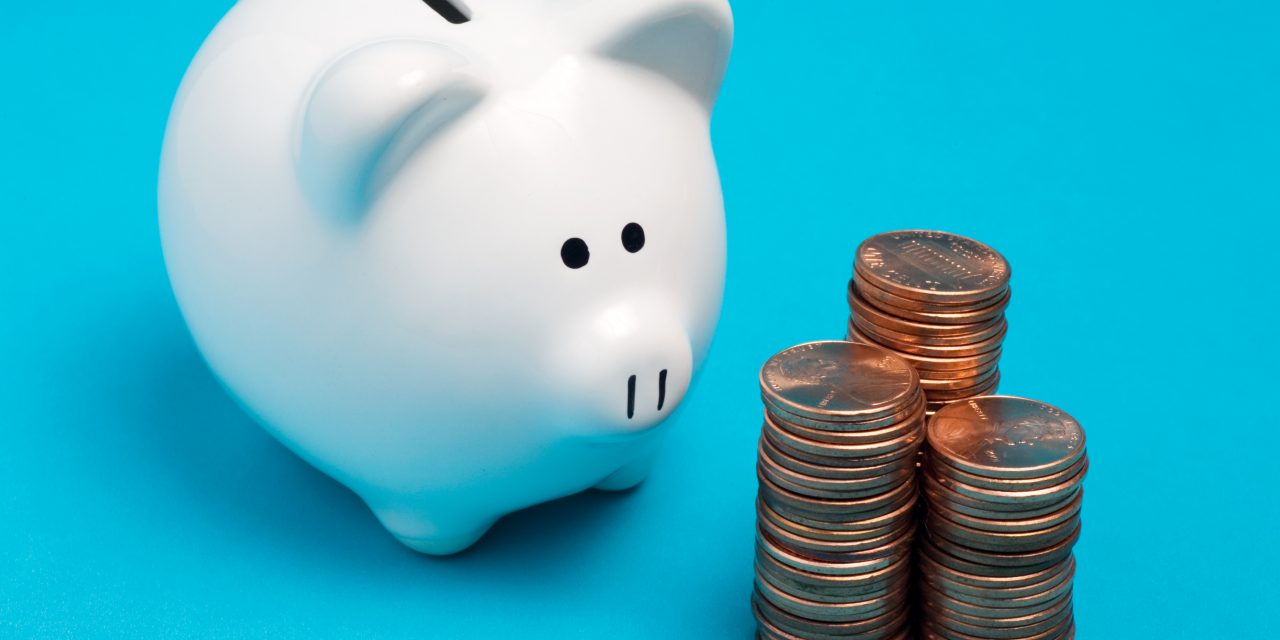When individual stimulus payments hit checking accounts in 2020 and 2021, the opportunities for low- and moderate-income households seemed endless. Suddenly, saving up for a down payment on a car or a house, or getting together a move-in deposit, didn’t seem so far out of reach.
But now, after two years of volatility, the national personal savings rate is starting to look more normal, at 7.3% as of October 2021.
The savings rate jumped to a record 34% of disposable income in April 2020. This bounce coincided with the first round of stimulus payments, which many put directly into savings. This rate fell back slightly in 2020, then bounced back to 27% in March 2021 with the arrival of yet another round of stimulus. For historical perspective, savings bottomed near 2% in 2005 when consumer confidence was at its highest (and most unreasonable).
Cash balances — including checking and savings — remain slightly higher as of July 2021 compared to before the 2020 recession, according to a JPMorgan Chase report. But these balances are dwindling. While more money was available to households back in July, high inflation — which reached 7.0% in December 2021, according to the Bureau of Labor Statistics (BLS) — has chipped away at balances in the intervening months, as evidenced by the “normal” level of savings in Q4 2021.
High consumer price inflation (CPI) hits low-income households hardest, causing the steepest drop in savings for this income group, which are primarily renters. Likewise, pandemic stimulus payments also had the greatest impact on low-income households, with stimulus injections causing cash balances to more than double for the lowest-income quartile.
Here in California, the room for saving is even narrower due to the high cost of living, thus the savings rate is lower than the national average.
During the 2010’s, while jobs recovered steadily from the 2008 recession, home prices and rents increased far faster than incomes. This disparity has left most households just one emergency away from financial ruin, let alone with left enough left over for a down payment on a home.
Further, the incentive for saving remains as low as the “negative” interest rates on savings accounts, which are insufficient to cover inflation increases in even a normal year when inflation is limited to just 2%-3%. In turn, the savings rate remains low here in California and across the U.S.
In other words, 20% down payments are increasingly rare among first-time homebuyers without access to a trust fund, or a family-funded down payment gift.
Related article:
Personal savings to fall below pre-pandemic levels
In 2022, many residents will continue to draw on savings to survive as they face high levels of inflation alongside joblessness.
The Great Resignation caused high levels of “quits” in 2020-2021, leaving many to rely on their savings. Many former workers have left the job force for good, either due to early retirement or being forced to continue caring for the young and old at home as the pandemic keeps school disruptions and health scares normal occurrences.
But counting on savings has become increasingly difficult heading into 2022, as the inflation that was once considered transitory has quickly become permanent and ongoing.
As savings dwindle, so do individual economic prospects — and the outcome for housing ought to worry real estate professionals.
The high savings rates of 2020-2021 were fleeting and will have no long-term bearing on the housing market. Despite the picture painted by 2021’s rapid home price increases, the fuel from record low interest rates and homebuyer exuberance is running out. Thus, view home sales in 2022 with caution.
Instead, look to the jobs recovery for a clearer picture of Californians’ access to incomes and savings. Over 700,000 jobs are still missing from California’s economy as of November 2021. At the current start-and-stop pace of recovery, these jobs won’t begin a consistent recovery until around 2024. Until that date, home sales will remain volatile, and agent and broker incomes less predictable.















CORRECT – IT HELPED CHINA! People got their tax money back and jumped fast onto the internet ordering merchandise MADE IN CHINA. Perhaps this is a minor exaggeration but unfortunately is the net result.